A men's shirt is a must-have item in every man's wardrobe, regardless of his lifestyle. Today, you don't have to buy one, because you can make one yourself using simple patterns and advice from fashion designers. What fabric to choose, what measurements to take before creating such a product as a loose-fitting men's shirt, how to build a fitted model, turn the back, how to make a pattern for a men's shirt and much more below.
Textile
It is worth noting that today a men's shirt can be sewn from any fabric. Often, fashion designers of the world even resort to silk and tulle to create creative products. As for everyday life, rather than high fashion, most preference is given to knitwear and cotton. These are the most durable fabrics that are easy to wash and iron. Moreover, the first can be done both by hand and with a washing machine. Thanks to the addition of lycra, the elasticity and flexibility of the material increases. Without synthetic additives, the fabric also has advantages and is distinguished by:
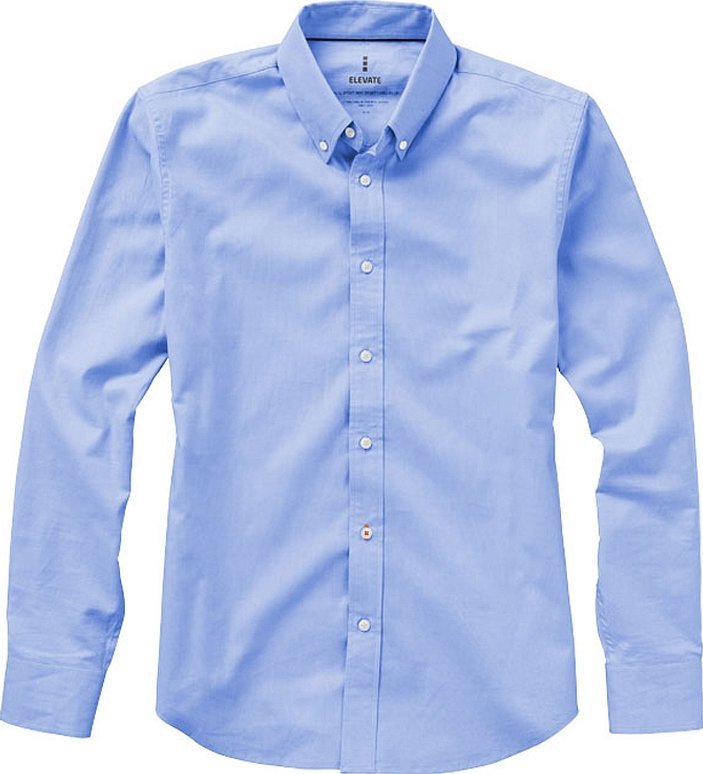
- minimal risk of skin irritation;
- hygroscopicity and ease of maintenance;
- resistance to high temperatures and external attractiveness;
- breathability and pleasant texture.
The only drawback is that it wrinkles and gets dirty quickly. Another popular material for shirts is poplin based on cotton fabric and herringbone - a material that is distinguished by its high density and resistance to dirt. Often, products are also made of jacquard, flannel and denim. Often, craftswomen resort to such cotton fabric as twill.
Please note! It is important to understand that the fabric for sewing a shirt should be two-woven, so that the resulting shirt has expressiveness and at the same time retains density, has a high-quality texture and does not lose shape. When choosing a fabric, you need to look at the length of the fibers, since this is the most important quality criterion. It should be at least 16 millimeters. It is better if it is 25-30 millimeters. It is believed that longer fibers make the product more pleasant. It is desirable that the composition contains more cotton than other synthetic elements, since synthetics make the material less durable. But 100% cotton should also not be considered, since this makes the product less elastic and practical.

Measures
To create the perfect handmade product, you need to take the right measurements, and then such an element as a shirt pattern. It is best to choose a relaxed, calm pose and not change your posture. The most important measurements are the neck and chest girth at armpit level, waist girth without allowance and hip diameter. When measuring the hips, you need to put the model straight with a straight posture and clamped legs.
Next, you need to make sure to measure the arm circumference in the biceps area. The arm should not be tense. Then comes the wrist measurement, if the shirt is long. Another important measurement is the sleeve length and the length of the entire garment (measurement along the back). It is important to understand that if the shirt is tucked in, you need to add another 10 centimeters in length.
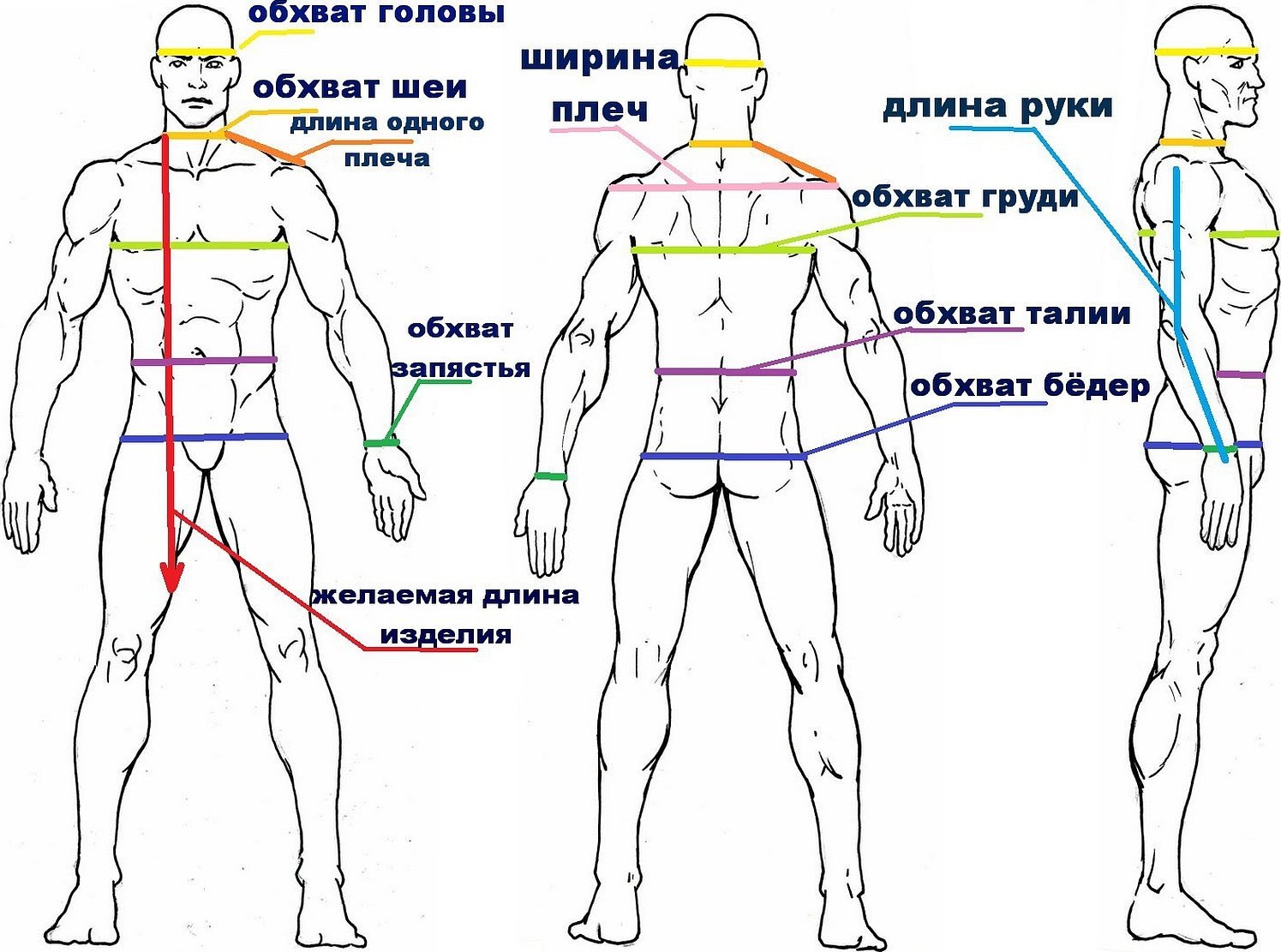
Taking measurements from a finished shirt
Supplementing the topic of how to take measurements from a finished shirt, it is worth noting that it is much easier to take measurements from a finished shirt than from a model. All you need is to place the product on a hard, flat surface and take the measurements shown above with a centimeter. The simplest option for creating a new product is to cut the old one along the seams and transfer the resulting blanks to the new fabric. Then all that remains is to sew everything exactly as the old fabric was cut. Interestingly, such master classes can be found from every novice needleworker who is just mastering the basics of modeling and sewing clothes.
This is a very convenient and simple method for obtaining a practical new fashionable fabric.

Construction of the pattern
A detailed step-by-step construction of a shirt pattern is usually contained in every manual for a beginner needlewoman. Construction of a men's shirt pattern usually includes the creation of a shoulder line, back, side cut, neck, collar pattern, sleeves and cuffs.
Shoulder line of the shelf
If the initial dimensions of the product are: chest circumference 104, waist - 92, sleeve length 64 and the length of the product is found to be 74 centimeters, then you can make a shoulder line. It is made with the connection of the neck. From the top of the line to the armhole, you need to put aside a segment that is equal to four centimeters and connect the resulting point with the neck.
Important! The shoulder line should be parallel lowered by several centimeters, in accordance with the fact that the shoulder cut of the back is raised. The length of the shoulder line is equal to the length of the shoulder.
Back width
As for the width of the back, the cut of the shirt is made according to the formula Og divided by the width of the back with a one and a half centimeter increase. From the resulting point, you need to draw a line to the depth of the armhole and put off a quarter of the segment from this point to the right, making the line perpendicular.
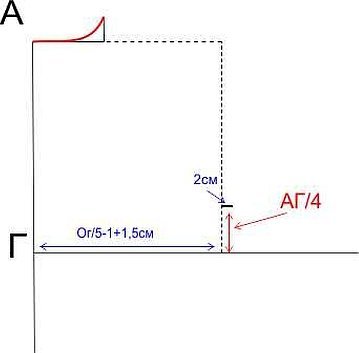
Side cut line
The side cut line should be designed according to the drawing in the picture below. As a rule, it is made based on precise data.
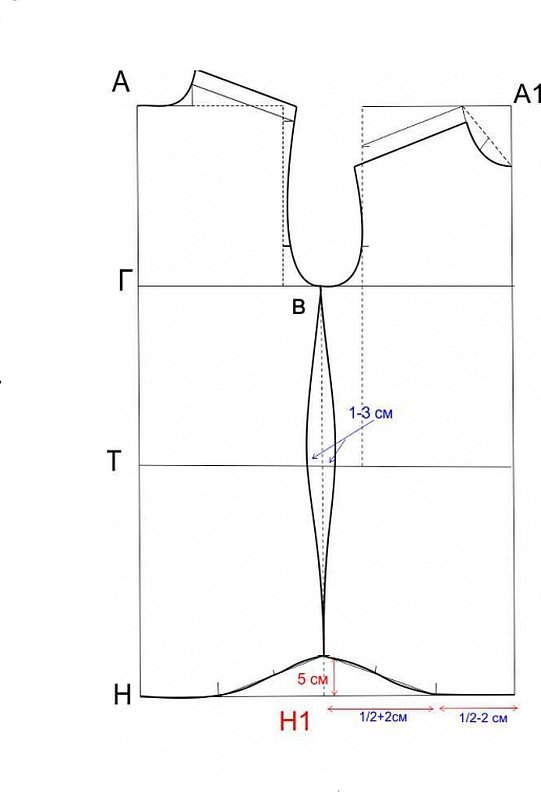
Back neck (sprout)
To make the neckline, take its width from the back pattern and mark a line down the middle of the front. Connect several new points using an auxiliary straight line and divide it in half to make a perpendicular, and then follow the pattern.
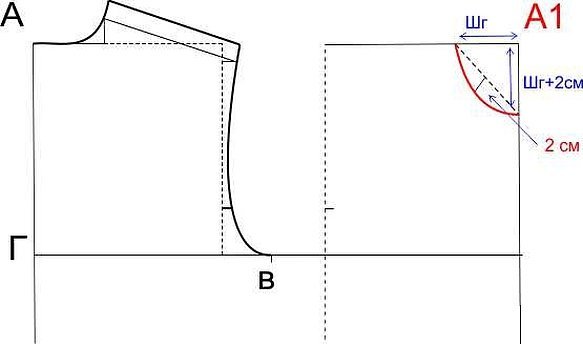
Collar pattern
To make a collar pattern, you need to put the lengths of the front and back neckline on the x-axis and add one and a half centimeters to it for the fastener according to the diagram. Make the lines smooth curves, and draw the collar flap widening at the ends.
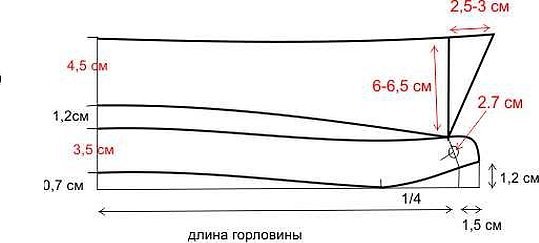
Sleeve for men's shirt
To create the sleeve, you need a coordinate axis similar to the letter I. Then draw the missing details of the sleeve width values with the depth of the folds and the processing of the fastener.
Important! The armhole line is formed by a simple curved line, taking into account the part of the armhole to the right of the vertical line towards the armhole and the left one towards the shelf. Everything is shown in the diagram.
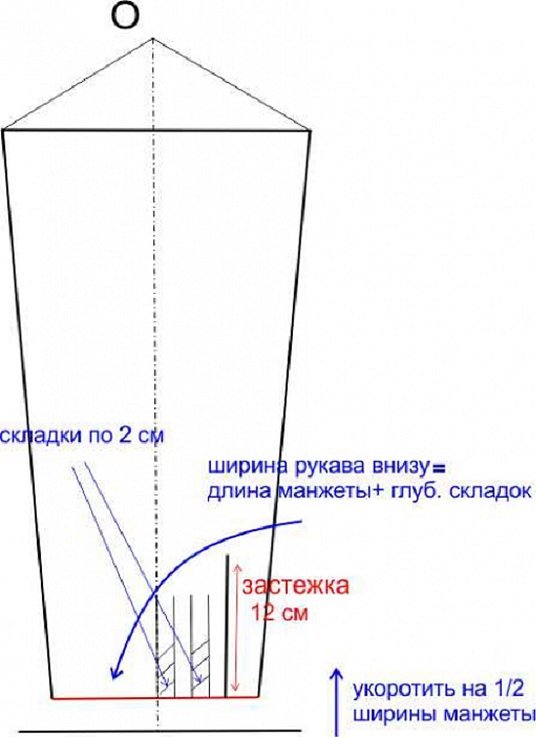
Pattern of cuff to sleeve
The cuffs require their own pattern and their own diagram. This is a rectangle with a length of 23 centimeters and a few centimeters of allowance, and a width of 7.5 centimeters. More details on the diagram.
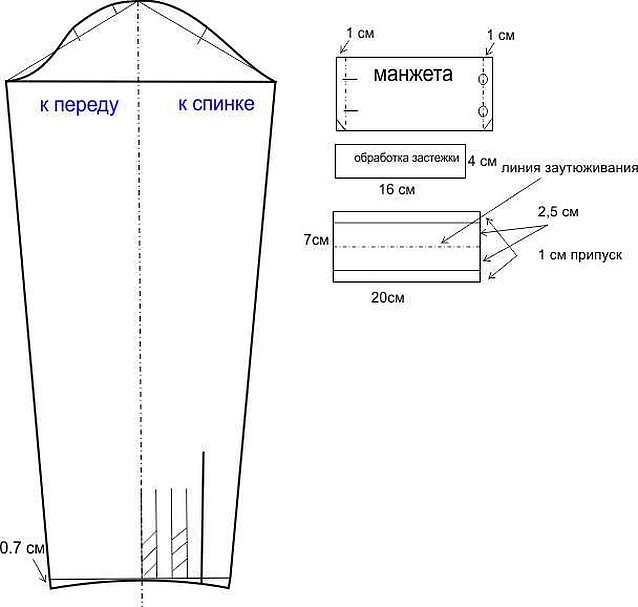
How to make darts
Darts on a men's shirt are very easy to make. The main thing is to measure and make marks with a needle, which darts need to be made and how many centimeters they are. Then, using a special pattern, make marks with soap or chalk according to the scheme below and sew all the details from the inside. If the figure has noticeable curvatures of the back, then the darts should not be straightened.
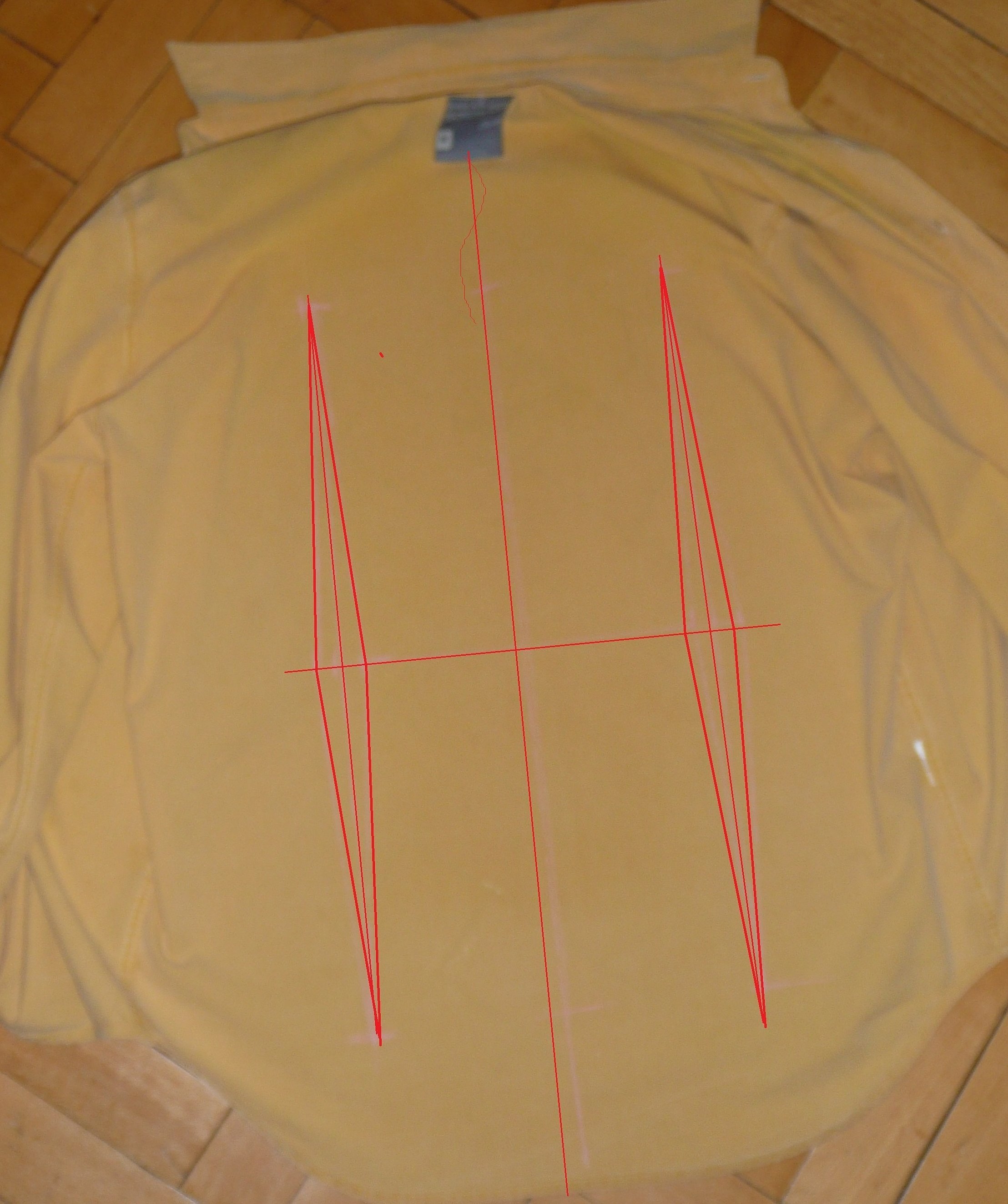
Pattern by Alexander Timofeev
Alexander Timofeev is a famous fashion designer who sews clothes for both women and girls, as well as for men. To make one-piece patterns for a women's or men's shirt, taking into account the yoke, a kosovorotka for a beginner on a doll according to his lessons, you can watch a video master class or use one of the lessons described in his manual.
Sewing a men's shirt
Sewing a men's shirt requires complete and blind adherence to a specific master class from an experienced needlewoman or a lesson from a manual on sewing men's clothing.
Important! As a rule, the most important procedure is the correct measurement and unhurried calculation of all the pattern measurements. This is the only way to make a beautiful and high-quality product.
In general, the best fabric for creating a men's shirt is knitwear, but the list of materials is not limited to it. The necessary measurements include shoulder width, arm length, and collar volume. It is not difficult to make a pattern and sew any model, the main thing is to take into account the above recommendations for the formation of each detail.




